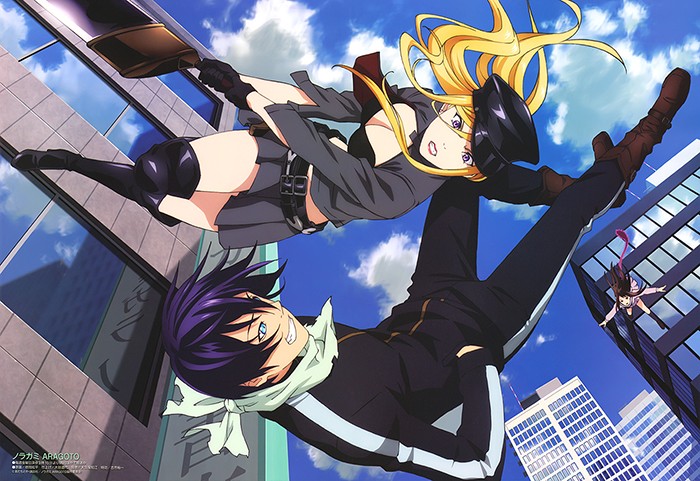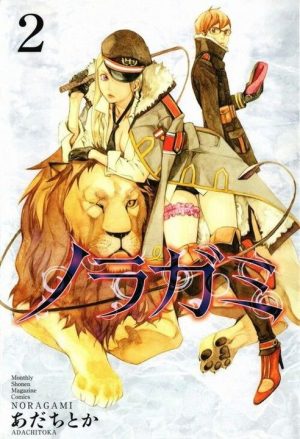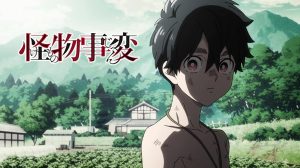- Episodes : 13
- Genre : Action, Adventure, Supernatural, Shounen
- Airing Date : Oct 3,2015 to Dec 26, 2015
- Studios : Bones
Noragami Aragoto Preview / Plot (No Spoilers)
Bishamonten, the god of war, is back in the second season of Noragami, still looking to Punish Yato for his old transgressions. Just what conspired between these two in the past? How do Hiyori Iki and Yukine come in to play in the long-standing feud between the two? Yato’s nefarious and bloody history is coming to a head in this new season of Noragami.

What is Noragami Aragoto Like? This Anime is for people like what?
Noragami has as wide as an audience as some of the more popular Shounen series of the day like Attack on Titan. It’s an action show, with a firm foot in the supernatural, which will attract a lot of Shounen fans. On the flip side, it focuses a lot on its characters, and the relationships between them, with some romantic undertones, in a way that feels like a Shoujo series.
Though there are some great fight scenes, it’s main draw is it it’s great characters, drama and plot-line's which always add to the character development. Its Shounen, but it feels very mature without getting into Shingeki no Kyojin or Tokyo Ghoul levels of violence and edginess.
What’s so appealing about this piece of work.
Noragami’s main strength is the strength of its writing and the attention it pays to its characters. In the series, so many of the characters feel well-rounded, with motivations that feel organic, relatable and well-explored, including the antagonists. Its setting is also equally enjoyable, with more attention being paid to the land of the Gods in this season compared to the last. It’s a show with great design sense, including modern takes on the looks of Kami and other beings in Japanese spirituality.
TV Anime "Noragami ARAGOTO" 2nd PV
Noragami Aragoto Main Characters List
Yato
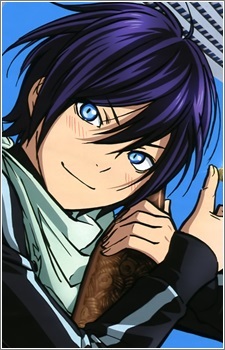
Voice Actor :Hiroshi Kamiya
Yato, the god of war, or god of calamity, is again the series main character. Still taking on odd-jobs for a measly 5 yen to boost his own popularity, and getting into various shenanigans with Yukine and Hiyori, Yato faces some major challenges this season. The renewed efforts of Bishamonten cause Yato to steer away from his easy-going nature and seriously confront what happened in his past, as well as his evolving relationships with Yukine and Hiyori.
Hiyori Iki

Voice Actor :Maaya Uchida
One foot in the near shore, one foot in the far shore, Hiyori’s double life is having major ramifications. More than just affecting her studies, social life and other daily aspects of high school living, she’s faced some serious threats that endangered her very life. Hiyori wants to stay close to Yato and Yukine, and she can’t accept going back to a normal life without her relationships between the two, but there might be forces outside of her control that challenge this. Still acting as a big-sister to two feuding little brothers, Hiyori’s character arc this season is a delight.
Yukine
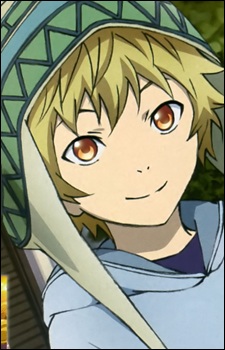
Voice Actor :Yuki Kaji
Yukine had some major development last season, and this season he gets even further along. Last season, Yukine essentially felt sorry enough for himself to behave without virtue, or care for others, Yato most of all. But now after building closer bonds with Hiyori and Iki, He’s moving further and further from his old, dishonest ways. This season shows Yukine working harder to improve himself, and realize how much he cares about Yato and Hiyori.
Contains Spoilers
Noragami Aragoto Review
Noragami Aragoto is a step up from the first season in a number of ways but most of them have to deal with how the second season is a more emotional, deeply felt experience than the first. Much of what made Noragami the wonderful blend of action, humor and drama that so many shows grasp for is present again in Aragoto, but the plot-lines run a little thicker on the characters emotions, and the viewer is strung along for the ride.
And it’s a damn good ride to be on, in 2014, the Noragami Manga was in the top 30 of the years in Sales and for good reason. Adachitoka has a penchant for writing good characters, involving them in plot lines that focus on their emotional trials and juxtapose them with characters who act, or react to things from a different perspective. This forces self-evaluation and change, often with a serious enough threat to themselves, loved ones or both, to ratchet up the tension. Human emotion has always been front in center in Noragami’s universe. After all, Ayakashi themselves, the main assortment of Baddies in the series, stem from negative human emotion. The first Ayakashi depicted develops out of the fear and anxiety from a school student subject to bullying and constant scrutiny by her peers. It’s a great example of in-universe world mechanics being used to heighten the emotional relevancy of the story.
The first arc of the show revolves around Bishamonten, and while we know that Yato was involved in some violent transgression against her, this season shed’s new light on what happened. Yato, in his old, blood-letting days, killed her clan of Shinki wholesale, with Kazuma being the only survivor. An arc which focuses on Yato’s bloody past, when he was already established as a likable, good-natured protagonist throughout the first season is a wonderful idea, which gave some moments in the arc and almost Kenshin like feel to them. For her part, Bishamonten is somewhat of a foil to Yato, she’s well-known and respected, with a larger number of Shinki who she seeks to care and provide for, but this unfortunately becomes her undoing.
We know that when a god’s Shinki acts improperly, it pains the master, and in extreme cases, can corrupt the deity leading to death in the most extreme cases. Whereas we first thought that Yato killed Bishamon’s clan out of his prior malicious nature, the biggest and best twist comes from the fact that Bishamon herself had more to do with her clan’s downfall.
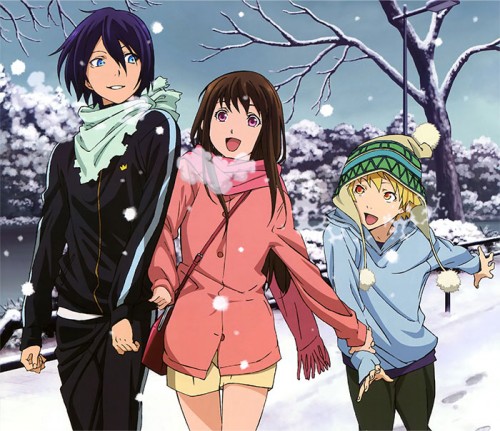
Taking in too many Shinki opened herself up to the pain and duress from their own corruption, and the more people crammed into a house, the more infighting you could expect. The relationships between master and Shinki, as well as relationships between Shinki of the same master is always similar to that of an actual family, so taking in Shinki as if they were refugees puts a strain on a relationship better suited to close-knit groups, rather than large ones where you can remain ambiguous.
Eventually Bishamon’s Shinki starting turning on each other, mostly in the name of finding out who was corrupting Bishamon. To the end they try to protect their master, and this causes them to become corrupt themselves, and almost kill Bishamon. This is until Kazuma intervenes, recognizing the rest of his clan is too far gone and a mortal danger to Bishamon, and asks Yato to kill them to save her. But the fallout and trauma from this experience is too much for Bishamon to bear, she sees Yato as killing her clan and family out of his own evil intent, and afterwards begins the process of taking in Shinki after Shinki anew, leading to the same disaster to take place in the events of Aragoto.
This is one of the reasons, I say, Noragami is just well written. This is expertly conceived tragedy, where a characters own faults cause themselves, and others, to go through the very same torment they hoped to avoid. All the while placing the blame on another, and not reflecting properly and figuring out that the root problem was herself all along. This type of poetic tragedy almost approaches Berserk levels of intensity, yet doesn’t approach its level of bleakness by merit of the Bishamon arc having a bitter-sweet ending. This level of storytelling is a huge part of why this season is so wonderful.
World-mechanics that add to the emotion is something that I’d like to come back to, because there’s new fitting elements that were added this season. Yukine, in a bid to save Yato’s life, throws himself in front of an attack, shattering him, still in sword form, in two. It’s a huge cliffhanger that leaves you on the edge, but in the next episode it’s revealed that because Yukine effectively gave his life to save Yato, he becomes a ‘Blessed Vessel’, basically a higher level of Shinki. It’s a wonderful addition to Yukine’s character and fits so well into his development.
The idea of Kami reincarnation also adds to the emotional edge. Notable gods like Bishamonten will be reincarnated due to the place in the collective consciousness of Japan, but Yato, not so much. So when It’s a complete opposite of his selfish beginnings, and it’s wonderful to see how Noragami keeps adding in elements which add to the emotion.
The Nora character, who’s name we now know as Hiro, also has a fascinating and dark relationship with Yato. It’s made clear that the two are essentially siblings, but their relationship is not exactly so wonderful. Hiro and Yato’s relationship feels more and more abusive as time goes on. Hiro cornering Yato, trapping him and preventing him from seeing the people he cares about, all the while insisting that they would abandon him anyway while she would be the only one he could rely on for emotional support are telltale signs of an abusive partner.

The further we go into the series, the more this relationship shows even more depth and the reveal of a ‘father’ character between them suggests a whole other dimension for the both of them. For Hiro especially, it suggests that she too was the subject of abuse, and is carrying on the same learned behaviors, all the while it’s clear that she does have genuine feelings for Yato wrapped up in her abusive thoughts and practices. Those who commit abusive acts generally come from abusive situations, and do actually care about the partners in they doll out the abuse to, adding another layer of realism to Noragami’s story.
There’s so much to say about Noragami’s storytelling and the fine points of it’s writing and character dynamics but one of it’s greatest features is that it holds up well under scrutiny and close analysis while still being completely accessible. There’s a lot to discover when you look in under the hood and go in for a second session for this show but there’s also an entertaining ride right off the bat that’s not going to come off as overly cryptic and abstract. So if close-knit character studies a la Evangelion are your thing, but you don’t mind or prefer a more straight forward presentation, you’ll have a great time.
The world design of the series is also wonderful, particularly the costumes of the Kami. They all feel like contemporary takes on antiquated figures, evoking a similar feeling to Romeo + Juliet, the modern take on the famous Shakespeare play. Bishamonten especially had a host of wonderful deigns, including a battle armor that felt like a cross between Saber and something Erza scarlet would wear as well as some more modern military garb inspired outfits. My main gripe with the show would be that the animation feels less impressive than last episode, and the show takes a bit of a dip visually.
Thankfully with the improved storytelling this is more of a sidebar. Finally, Iwasaki Taku’s excellent soundtrack makes a return with some worthy new additional pieces as well. His music and style really fits the whole tone of the show, and was definitely the best choice to be the composer.
1. All that Character Development
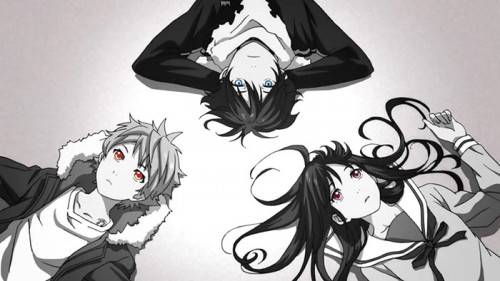
Oftentimes when I feel a show told a great story, I often consider looking at the first few episodes after finishing the whole series to be a strange experience. And it’s really because, if the development, character arcs and plotlines were all effective, the characters have reached an incredibly different place than they were in the beginning, with their ultimate point in the story being so meaningful to the viewer that when the characters first meet each other, it feels strange, like looking at a picture of a friend or family member from how they were ages ago. This is definitely the feeling I got from Noragami this season.
2. Relationship between Yato and Bishamonten
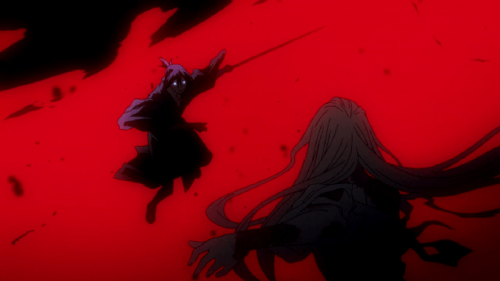
Yato and Bishamonten are fools for each other in a number of ways. Bishamonten is wealthy, powerful and noteworthy, and Yato is poor and unnoticed. Bishamon is concerned with protecting any Shinki that comes her way and Yato more focused on simply Hiyori, Yukine, and his own goal of fame.
Their conflict early on is essentially a result of a huge miscommunication between them, and is a result of two mistaken paths they take. It’s just Bishamon learns that it was a mistake a little later on.
3. Yato’s shrine
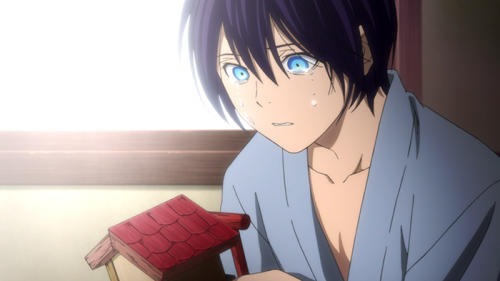
The shrine Hiyori gives Yato in episode 7 gave me a huge, huge smile. It’s a fitting symbol of how he’s progressed as a character and his relationship with Hiyori. Instead of a garish, Olympian shrine it’s a tiny, handcraft-er and more intimate shrine. The fact that Hiyori made it with her own hands is highly significant and testifies to the bond between the two. The gift sends Yato into tears of joy and we can see why.
Closing
In conclusion, Noragami: Aragoto is one of the best experiences this 2015 had to offer in Anime. It offered even more emotional depth to an already emotional first season. It gave character’s new challenged that were more than just tests of skills or arbitrary battles, but revolved around who they were as people making the conflict feel organic and tense.
They brought new dynamics into the relationship the characters had, making us look at them, and the characters look at each other in new ways. It’s a wonderful, emotional tale that should appeal to different demographics and fans of multiple genres. Noragami Aragoto is one of 2015’s must-see Anime.
Recommended Post
6 Anime Like Noragami [Updated Recommendations]
Recommended Post
Who is Bishamon as Seen in Noragami?
Recommended Post

